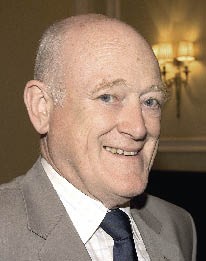CLEAN COAL - Dr Mike Farley, Director of Technology Policy Liaison, Doosan Babcock

Dr. Mike Farley
The UK 2007 Energy White Paper and the EU Energy Package each point to the need for a diverse portfolio of energy sources for power generation to achieve security of supplies. Both emphasise the vital importance of coal in the generation mix and recognise the integral role that cleaner coal plays alongside energy efficiency, renewables, and nuclear in reducing emissions.
On 23 January 2008 Jose Manuel Barosso, President of the European Commission delivered a speech to the European Parliament entitled "20 20 by 2020: Europe’s Climate Change Opportunity". The speech outlined the Commission’s goals to reach 20% of energy use through renewables and to bring about a 20% cut in EU greenhouse emissions - all by 2020. To reach the latter target Barosso announced new rules to stimulate carbon capture and storage, tomorrow’s technology to cut emissions. On the same day the European Commission proposed a Directive on the geological storage of carbon dioxide.
Increased energy efficiency and renewable energy sources are important long-term solutions to reaching emission targets. However, we cannot reduce UK, EU or worldwide CO2 emissions by 50% in 2050 if we do not also plan to capture CO2 from industrial installations and store it in geological formations. In the EU alone, reductions of CO2 by carbon capture and storage from the power sector could reach 161 Mt in 2030 and 800-850 Mt (20%) in 2050. We welcome the European Commission’s Energy and Environment package as it finally recognises the vital role of clean power generation from fossil fuels in the future global energy mix.
While some remain sceptical about the feasibility and economics of CCS, the process is proven; already millions of tons of carbon dioxide have been permanently stored underground. In addition, studies have shown that electricity from power plants with CCS will be less expensive than electricity from renewable sources. The phased introduction of carbon-abated clean coal is the lowest risk approach to meet all three Energy Review objectives relatively quickly. If the UK is to avoid the impending energy gap, a large number of new or replacement carbon-abated power plants will need to be operational by 2015 and need to be started between 2006 and 2011.
Whilst in the past, clean coal was considered to be synonymous with gasification or Integrated Gasification Combined Cycle (IGCC), it is now seen to include a number of conversion technologies (including advanced supercritical boilers, fluidised beds and gasification) and a number of CO2 capture technologies (including post-combustion solvent absorption, oxyfuel firing and pre-combustion). All of these technologies are likely to have a role in the plant mix because clean coal technologies are needed for existing plant (including recent plant in China, USA and Europe) as well as future plant.
To maintain a diverse portfolio, it is necessary that a significant proportion (a third to a half) of the plant to be built in the UK for operation by the end of 2015 is coal and, to meet CO2 reduction targets, it will need to be suitable for CO2 capture. Many projects have to start soon before the best options for CO2 capture are finalised, and it is therefore likely that the plants will be in two groups:
(i) A small number of new build (or retrofit) plants with CCS fitted from the start. These demonstration projects would allow the best CCS options to be understood by 2012 to 2015. Ideally, these projects would include the three capture technologies and three different types of storage site (oil-field, gas-field and saline acquifer). The BERR competition winner will be one of these projects. It is recognised that incentives will be necessary to make all these projects happen. The current Emissions Trading Scheme does not yet provide the long-term certainty of carbon price to justify investment.
(ii) 5 to 8 GW of "capture-ready" new build or retrofits. These will bring short-term CO2 reductions, security of supplies, economic electricity and options for fitting CCS from 2012/2015 onwards.
In combination, this scenario would meet all three Energy White Paper (EWP) and EU Energy Package objectives. The technologies used would be capable of being used globally for existing plant (including capture-ready) and future new build. If Britain builds power plants (coal and gas) designed for CCS and demonstrates the technologies full scale it will set an important example to the world and, just as importantly, will be at a competitive advantage. The Prime Minister and the government have recognised this and should now back their ambitions with a support for a comprehensive programme of CCS projects which will prove engineering solutions capable of much larger scale carbon emission cuts than the "ethical consumerism" which many promote.
If the generation gap is to be averted, more urgency and ambition is needed by the government. Positive high level endorsement of the future role for coal must be given, including a target for the proportion of coal in the portfolio and timescales for the achievement of near-zero emissions for coal and gas generation. Incentives should be set for CCS sufficient to drive forward three or four demonstration projects covering the range of capture technologies and storage sites. The necessary funds should come from the auctioning of CO2 allowances which is to be progressively introduced.
More positive and consistent support must be given for research, development and demonstration on a scale commensurate with the global potential for clean coal technologies. Companies such as Doosan Babcock are just waiting for the green light from the government to deliver the clean coal technology needed to secure security of supply and reduce emissions in the UK.

| Telephone: | 01295 221270 |
| Email: | enquiry@bvaa.org.uk |
| Website: | www.bvaa.org.uk |
| More information on the British Valve and Actuator Association BVAA Member Directory Page |
Search related valve / actuator articles: British Valve and Actuator AssociationIssue 5Energy







-web.jpg)





